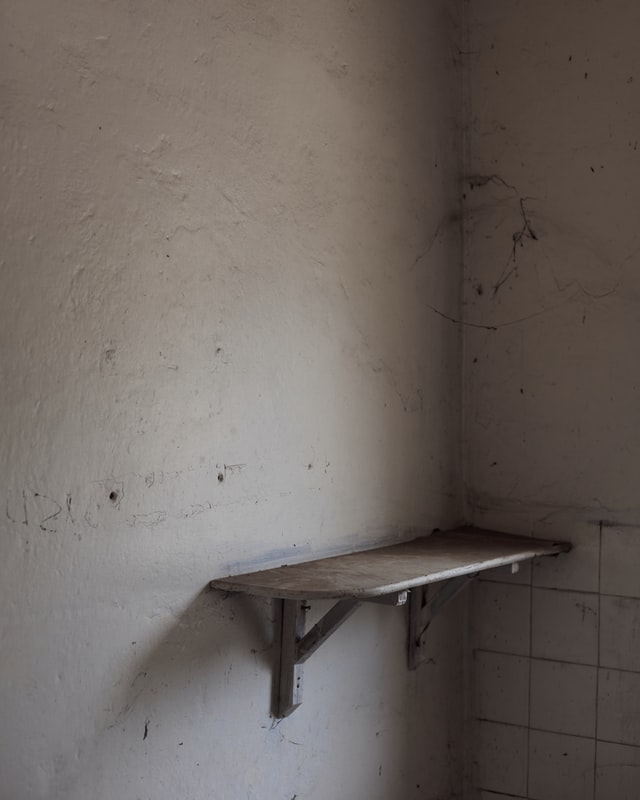Ghosting on walls can be frustrating. These dark streaks or patches ruin the look of your home.
Fortunately, cleaning ghosting is possible with the right steps. Ghosting happens when dust, soot, and other particles stick to your walls. This can occur due to poor ventilation, burning candles, or even from your heating system. The buildup may seem hard to clean, but it’s not impossible.
With some effort and the right tools, you can restore your walls to their original beauty. In this guide, we will walk you through simple and effective methods to clean ghosting. You’ll learn how to keep your walls looking fresh and prevent future ghosting. Ready to transform your space? Let’s get started.
Identifying Ghosting On Walls
Ghosting on walls appears as dark streaks or patches, caused by dust, soot, or mold. Cleaning involves using a mild detergent and water, then gently scrubbing the affected areas.
Ghosting on walls can be a frustrating issue in many homes. It appears as dark, shadowy stains or streaks. These marks often confuse homeowners. Knowing how to identify ghosting is the first step to fixing the problem.Common Signs
Ghosting usually looks like dark, smudgy lines on walls. You might see them on ceilings too. They often follow the pattern of the wall studs. Another sign is the outline of picture frames or furniture against the walls. The stains can be light or heavy, but they are always noticeable.Causes Of Ghosting
Ghosting happens due to soot and dust. These particles cling to cold spots on walls. Burning candles, fireplaces, and smoking indoors can increase soot. Poor insulation can create cold spots. Moisture and condensation also play a role. They make walls sticky, trapping more dust and soot. This combination creates the ghosting effect. “`
Credit: porch.com
Essential Cleaning Supplies
Cleaning ghosting on walls can be a daunting task. Having the right supplies makes it easier. Essential cleaning supplies are crucial to tackle this issue effectively. They will help you achieve a clean and spotless wall.
Cleaning Solutions
The first thing you need is a good cleaning solution. You can use white vinegar mixed with water. This mixture is effective and safe. Another option is a mild detergent with water. Both solutions help in removing stains and residues. Remember to always test on a small area first.
Tools Needed
Having the right tools is equally important. You will need a soft sponge or cloth. These are gentle on the walls and avoid scratches. A bucket to hold the cleaning solution is necessary. Additionally, use a ladder if the ghosting is high up.
For tougher stains, a soft-bristle brush can help. This tool reaches into the texture of the wall. Finally, having some clean, dry towels is useful. They help in wiping down the wall after cleaning.
Preparing The Area
Before tackling the ghosting on your walls, it’s essential to prepare the area. Proper preparation ensures the cleaning process is smooth and protects your belongings. Follow these steps to get started.
Protecting Surroundings
First, remove any furniture near the affected wall. This prevents damage from cleaning solutions. Use plastic sheets or old cloths to cover the floor. This avoids spills and stains. Ensure all outlets are covered to prevent accidents.
Ventilation Tips
Open windows to let fresh air in. Good ventilation helps in drying the wall. Place fans near the windows to increase air circulation. This prevents fumes from cleaning products from lingering.

Credit: www.reddit.com
Removing Surface Dust
Ghosting on walls can be frustrating. It appears as dark smudges or streaks, often due to dust and soot. Removing surface dust is the first step to clean ghosting. This step helps to avoid further spreading dirt when you clean deeply. Here are some effective techniques to remove surface dust.
Dusting Techniques
Use a microfiber cloth. It attracts dust better than regular cloths. Gently wipe the wall in a top-down motion. This prevents dust from resettling on cleaned areas. Use a dry sponge on textured walls. It can reach into small crevices where dust hides. For persistent dust, use a damp cloth. Ensure it is only slightly damp to avoid wall damage.
Using A Vacuum
A vacuum cleaner with a brush attachment works well. It sucks up dust without spreading it around. Start at the top of the wall. Move down in overlapping strokes. This method ensures even cleaning. If your vacuum has variable suction, use a lower setting. High suction might pull paint off the wall. Be gentle around wall decorations and fixtures.
Cleaning With Soap And Water
Cleaning ghosting on walls can be a simple task with soap and water. This method is both effective and gentle on your walls. It requires minimal supplies and little effort.
Choosing The Right Soap
Start by selecting a mild soap. Dish soap works well for this purpose. Avoid harsh cleaners, as they can damage the paint. A gentle soap will lift the soot without stripping the wall’s finish.
Proper Scrubbing Methods
Use a soft sponge or cloth. Dip it in soapy water and wring it out well. Gently scrub the ghosting marks in a circular motion. Do not use too much pressure. This can harm the paint and the wall.
Rinse the sponge or cloth frequently. Change the water if it becomes dirty. This ensures you are not spreading dirt back onto the wall. After cleaning, wipe the area with a clean, damp cloth. This removes any soap residue.
Dry the wall with a clean towel. This prevents water spots and streaks. Repeat these steps if any ghosting remains. Consistent, gentle cleaning will yield the best results.

Credit: themaid-squad.com
Using Specialized Cleaners
Ghosting on walls can be unsightly. Using specialized cleaners can effectively remove these stains. This section will guide you through the types of cleaners and tips for their application.
Types Of Cleaners
Choosing the right cleaner is essential. Here are some common types:
- Commercial Ghosting Cleaners: These are designed specifically for ghosting. They are effective and easy to use.
- Household Cleaners: Some general-purpose cleaners can also work on ghosting. Check the label for compatibility.
- DIY Solutions: You can make your own cleaner with vinegar, baking soda, or hydrogen peroxide. These are eco-friendly and cost-effective.
Application Tips
Proper application ensures the best results. Follow these steps:
- Test the Cleaner: Apply a small amount on a hidden area. Wait to see if it damages the paint or wallpaper.
- Prepare the Area: Remove any dust or loose particles with a dry cloth.
- Apply the Cleaner: Use a clean cloth or sponge. Rub gently in a circular motion.
- Rinse: Wipe the area with a damp cloth to remove any cleaner residue.
- Dry: Allow the wall to dry completely. Use a fan if needed.
Using the right cleaner and technique can make a big difference. Clean walls enhance the look of your home. Follow these tips for effective cleaning.
Preventing Future Ghosting
After cleaning ghosting on your walls, it’s important to prevent it from coming back. Ghosting can leave unsightly marks and affect the appearance of your home. By taking a few simple steps, you can keep your walls looking fresh and clean.
Improving Ventilation
Proper ventilation is key to preventing ghosting. Ensure your home has adequate airflow. Open windows and use fans to circulate air. Install exhaust fans in kitchens and bathrooms. These areas generate a lot of moisture and pollutants. This will help reduce condensation and the buildup of soot and dust on walls.
Consider using air purifiers. They can remove airborne particles that contribute to ghosting. Regularly clean or replace air filters in your HVAC system. This ensures your system works efficiently and keeps the air clean.
Regular Maintenance
Regular maintenance of your home can also prevent ghosting. Dust and clean your walls frequently. Use a microfiber cloth to remove dust before it settles. Pay special attention to corners and edges where dust tends to accumulate.
| Task | Frequency |
|---|---|
| Dusting Walls | Weekly |
| Cleaning Air Filters | Monthly |
| Using Air Purifiers | Daily |
| Checking Ventilation | Seasonally |
Avoid using candles and incense frequently. They can leave soot on walls. If you must use them, ensure proper ventilation. This will help reduce soot deposits. Regularly inspect your walls for any signs of ghosting. Address any issues promptly to prevent further buildup.
When To Seek Professional Help
Sometimes, ghosting on walls can be too tough to handle alone. It can be frustrating when your efforts don’t pay off. In such cases, seeking professional help might be the best solution. Professionals have the right tools and expertise to tackle severe ghosting. They can also ensure the problem doesn’t return.
Severe Cases
Ghosting can be more than just a cosmetic issue. In severe cases, it can indicate deeper problems. Mold, poor ventilation, or structural issues can contribute to ghosting. These problems require specialized knowledge and tools to fix.
If you notice recurring ghosting after cleaning, it might be time to call a professional. Persisting ghosting can signify hidden moisture problems. This can lead to further damage and health risks.
Finding A Professional
Finding the right professional for the job is crucial. Look for experienced contractors with good reviews. A reliable professional will provide an assessment and a clear plan of action.
Here are a few tips to find a good professional:
- Ask for recommendations from friends or family.
- Check online reviews and ratings.
- Request quotes from multiple contractors.
- Ensure they are licensed and insured.
Choose someone who communicates well and understands your concerns. A professional with experience in dealing with ghosting and related issues will be most effective.
Frequently Asked Questions
What Causes Ghosting On Walls?
Ghosting on walls is caused by soot, dust, and moisture. These particles stick to cold spots, creating streaks.
How Can I Identify Ghosting On My Walls?
Look for black or gray streaks on walls. They often appear in patterns, especially near studs.
Can I Prevent Ghosting On Walls?
Yes, improve ventilation and insulation. Regularly clean walls and avoid burning candles or using fireplaces without proper ventilation.
What Cleaning Products Are Best For Ghosting?
Use a mixture of water, mild detergent, and vinegar. Avoid harsh chemicals as they can damage the paint.
Is Ghosting On Walls Harmful?
No, ghosting itself isn’t harmful. But it indicates poor air quality and moisture, which need addressing.
Conclusion
Cleaning ghosting on walls can be simple with the right steps. Regular maintenance helps prevent buildup. Use gentle cleaners to protect your paint. Always test a small area first. Be patient and thorough. Consistent care keeps your walls looking fresh.
A clean home feels more welcoming. Happy cleaning!
